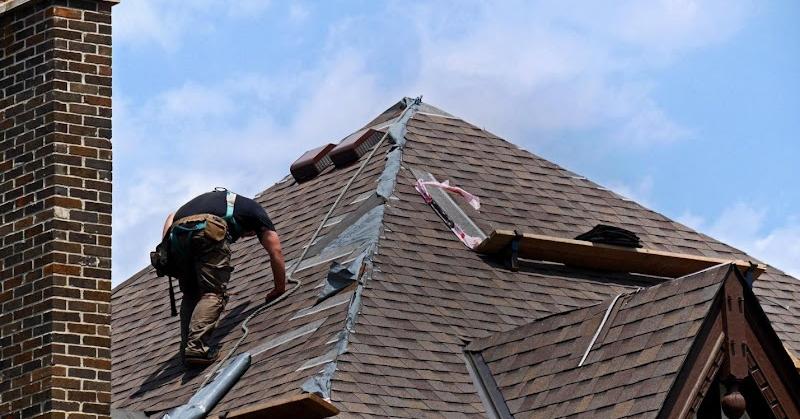Roofing emergencies can happen anytime, leaving you scrambling to find a solution. Whether it’s due to severe weather, fallen debris, or wear and tear over time, it’s essential to know how to handle these emergency roofing repairs effectively. Not only will this ensure the safety and security of your home, but it can also save you time and money in the long run.
In this guide, we will discuss the top 6 common emergency roofing repairs and provide tips on handling them effectively.
1. Leaks
Roof leaks are one of the most common emergency roofing repairs homeowners face. If left unaddressed, a small leak can become a big problem and cause extensive damage to your home.
The first step in handling a leaking roof is to locate the source of the leak. Check for any visible cracks or holes in the roof and patch them until you can get a roofing contractor‘s help. If damaged shingles cause a leak, replace them immediately to prevent further water damage.
2. Fallen Tree/Branches
During a storm, trees and branches can fall onto your roof, causing significant damage. If this happens, it’s essential first to assess the extent of the damage and contact an emergency roofing service if necessary.
In the meantime, for a DIY roof repair, you can remove any smaller debris from the roof and cover any holes or openings with a tarp to prevent water from entering your home.
3. Hail Damage
Hailstorms can cause significant damage to roofs, especially if the hail is large. If you notice any dents or cracks on your roof after a hailstorm, it’s essential to have it inspected by a professional roofing service. They will be able to determine the extent of the damage and make necessary repairs to prevent any further issues.
4. Wind Damage
Strong winds can lift shingles, cause them to crack, or even blow them completely off your roof. If you notice any missing or damaged shingles after a windstorm, it’s essential to replace them as soon as possible. This will prevent water from seeping into your home and causing further damage.
5. Ice Dams
Ice dams occur when snow on the roof melts and refreezes at the edge of the roof, creating a barrier that prevents water from draining correctly. This can cause water to back up under the shingles and into your home.
The best way to avoid ice dams is to keep your attic well-insulated and ventilated. If you notice ice dams forming, call a professional to remove them safely.
6. Cracked Flashing
Flashing is used to seal the seams and joints on your roof, preventing water from entering. Over time, flashing can become cracked or damaged, allowing water to seep through. If you notice any cracks in the flashing, it’s essential to have them repaired immediately to prevent further damage.
Calling an Emergency Roofing Services
By knowing how to handle these common emergency roofing repairs, you can protect your home and avoid costly repairs in the future. However, if you are uncomfortable or confident in making these repairs, it’s always best to call a professional roofer for assistance. They have the knowledge, experience, and tools to handle these emergency repairs effectively and efficiently.
Did you find this helpful? Be sure to visit our website and read more great content.

